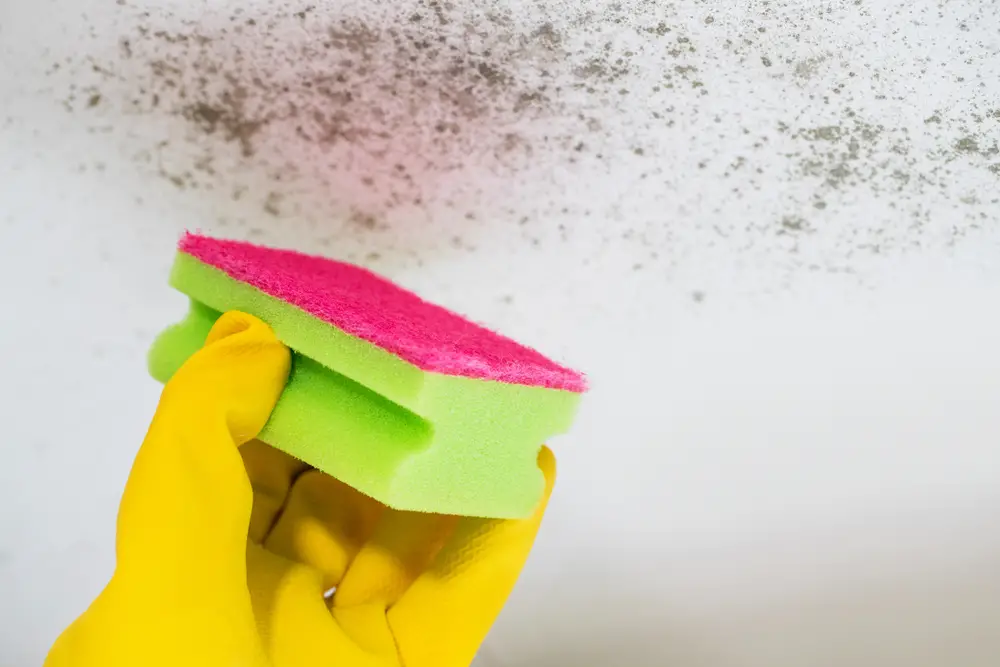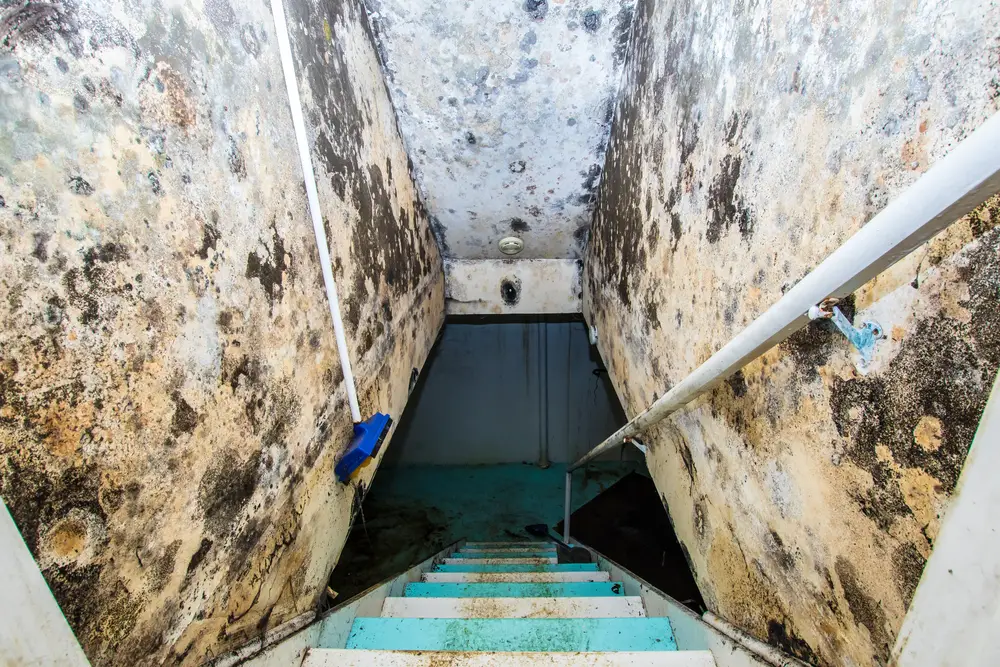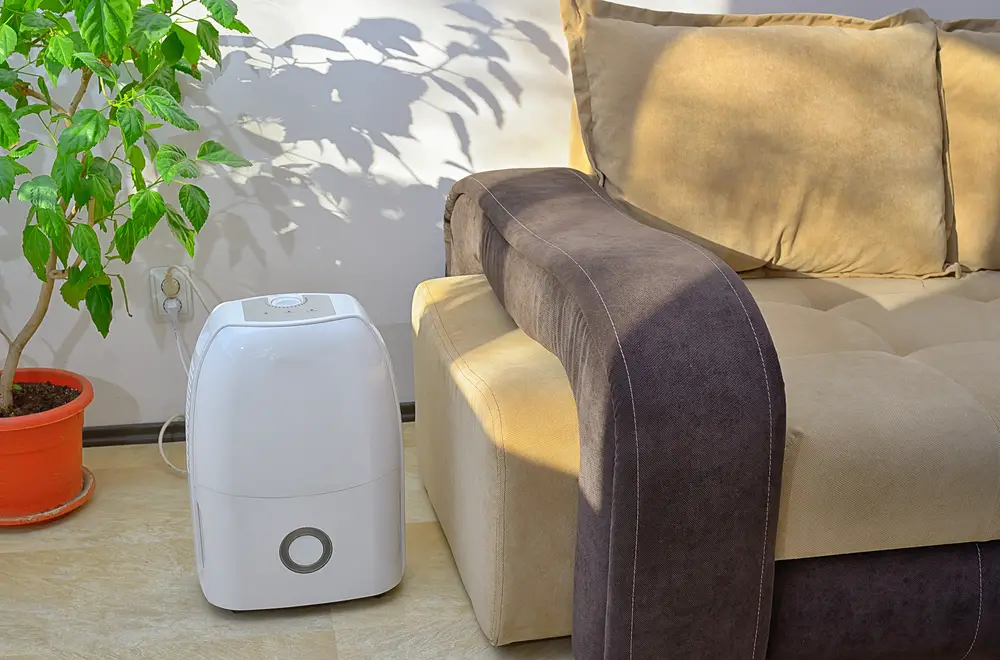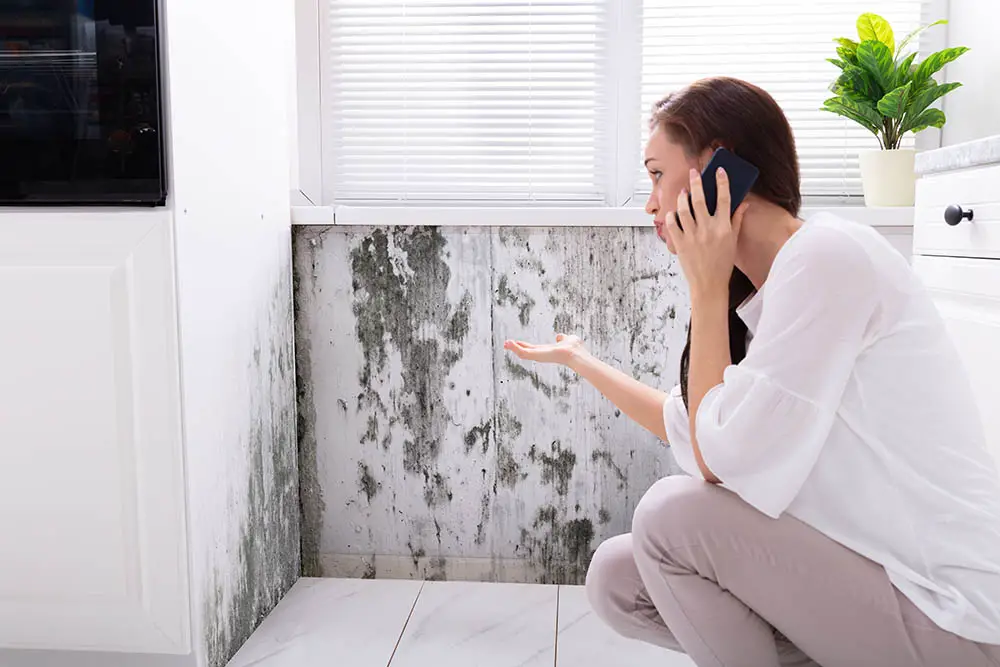The presence of mold on damp walls is not only unsightly but also poses potential risks to both the structural integrity of a home and the health of its inhabitants. Its normal for homeowners to make sure to get rid of mold on these walls, but how should they exactly do it to make sure the mold won’t come back? Let’s discuss!

Damp and mold are common issues that many homeowners have to experience sometime in their lives. Your home is especially vulnerable to these home invaders during the colder winter months where the days get shorter and it is generally wetter. Wherever you live, damp and mold can congregate.
Usually caused by a lack of house maintenance, once it arrives, it can become a lingering headache. Not only is it unpleasant to look at but it can affect your clothes and furniture and even trigger health issues such as asthma. Therefore, you must remove mold on damp walls as soon as possible. Fortunately, there are a few simple steps you can take to permanently get rid of damp walls for good.
Why Damp Walls Are Dangerous
Damp walls can lead to several issues. Here are four of the most significant dangers of damp walls:
Health Risks
When damp walls are exposed to air and water, they can produce large amounts of mildew and mold spores, which can be damaging to a person’s respiratory system if inhaled. Mold and mildew have also been linked to other illnesses, so it’s important to take action as soon as possible to get rid of damp walls.
Structural Damage
Mold and moisture can also cause damage to a building’s internal structure. The growth of mold and mildew on walls can result in the weakening of wood and other materials, which can cause the major structural damage to a building.
Property Damage
Damp walls can also lead to water damage to furniture and other personal property in a home. Even a small amount of water can damage items like mattresses and carpeting.
Costly Repairs
Finally, damp walls can be expensive. If a building’s walls and structure have been weakened by moisture and mold, it can be costly to repair any damage that may have occurred.
How To Prevent Having Damp Walls
Preventing dampness on your walls is quite simple with a little home maintenance such as wiping down the windows every morning to dissipate any condensation. However, if the dampness has already seeped into your home, there are ways of combating it.
Depending on the type of dampness, you may have to repair or replace certain gutters around your home or repair windows with dip grooves. Hopefully, though, it can be easier.
Rising dampness is a common problem and if it is serious, it may require a qualified surveyor who will take a moisture reading at your home and then identify the cause of the problem before advising a course of action. They may recommend installing a new damp-proof course that injects the walls with chemicals to form a water-repellent barrier.
This is usually done from the exterior of the home but the interior wall may need to be stripped back for this injection to take place. The wall will then be recovered with a specialist plaster. If the issue isn’t as large as this, you can tackle mold and damp yourself. All you need is:
- A stiff-bristled brush
- A cloth
- Chlorine bleach
- Some water
How to Properly Remove Mold on Damp Walls
When tackling mold, always wear protective glasses, gloves, and a face mask as it can be harmful to your health when in contact with your pores. Make sure you follow these steps guidelines:
- Open the windows or use a fan in the room
- Make a solution of chlorine bleach with water (1 part bleach, 3 parts water)
- Scrub the moldy area with the bristled brush
- Rinse thoroughly with a cloth and water and let dry
You can also use specially formulated products for mold and damp that may be stronger and more effective. Always try and prevent mold and damp in the first place. Try using a dehumidifier to reduce the humidity in your home. This will significantly limit the chance of mold and dampness occurring.
How To Permanently Get Rid of Damp Walls
It’s important to regularly check walls for signs of dampness and take action immediately if any is found. Here are some tips to help you find and fix damp walls:
1. Turning off Humidifiers:
A common cause of damp walls is the use of humidifiers. If you have any in your home, be sure to turn them off, especially if you’re away for an extended period. This can help prevent moisture buildup.
2. Ventilation:
Good ventilation is key to preventing damp walls. Make sure there’s space for air to flow freely indoors, and open windows and doors when it’s possible. This works well unless your climate is very humid in which case you will want to use an ERV (energy recovery ventilator).
3. Look for Signs of Moisture:
To find and fix damp walls, you need to be able to identify them. Signs of dampness include water stains, condensation, and mold. Taking steps to prevent mold growth is key to preventing damage to walls.
4. Use a Dehumidifier:
If you do have damp walls, a dehumidifier can help get rid of excess moisture. Dehumidifiers work by removing moisture from the air, which can help keep walls dry.
Identify Water Vapor Sources
There can be several sources that are causing damp walls, condensation and mold growth. Here are some ideas to look out for.
- Showering creates a lot of water vapor that requires ventilation.
- Cooking also can greatly increase the humidity in your house.
- Drying clothes indoors
- Gutters that are damaged or not installed properly
- Wall or roof leaks that allow water intrusion into the wall cavity
- Humidity of your climate can intrude into your house and combined with air conditioning cause condensation
If your house has a persistent damp problem, then dehumidifiers and opening windows may not be cutting it. If one or more walls are seriously impacted, you should seek help from a professional surveyor. Let’s start by looking at dehumidifiers and ventilation. Dehumidifiers draw in moisture from the air. This is very useful if you regularly dry clothes in your home which can cause excess humidity.
Even showering and cooking can cause higher levels of humidity that can lead to damp over time. If you notice any mold spores in your home, it may be worth investing in a dehumidifier.You can also ventilate your home to get rid of condensation. This can be done by regularly opening your windows to let air into the rooms.
You can also add window vents and build air bricks into the walls so condensation is released. You can also install air vents into internal walls and sealed chimneys for increased airflow. If your wall is constantly damp, you can paint it with damp-proof paint. Old bricks can easily become porous which allows water into your home. However, if this occurs, you may need to have the bricks replaced.
Before this drastic step, you could try painting the exterior bricks with silicone water-repellent fluid or limewash.
Doing this can seal the walls again but still allow them to breathe sufficiently. It is a good idea to do this, even before any signs of damp as this paint is an excellent preventative measure. However, you should seek professional help first to find out what would be the best course of action for the age of your house and its building materials. You may need to repair or replace your damp-proof course or membrane. This is usually only applicable if you have a wider area that is affected and other treatments have not worked.
A common method of repair is for a contractor or damp specialist to drill holes into the wall and then inject damp-proof cream which acts as a new course.
There are also the options of cutting grooves into the brickwork and then installing a singular piece of damp-proof course instead of a chemical type. Although all can be costly, you must take action as soon as you notice any signs of mold or dampness.









